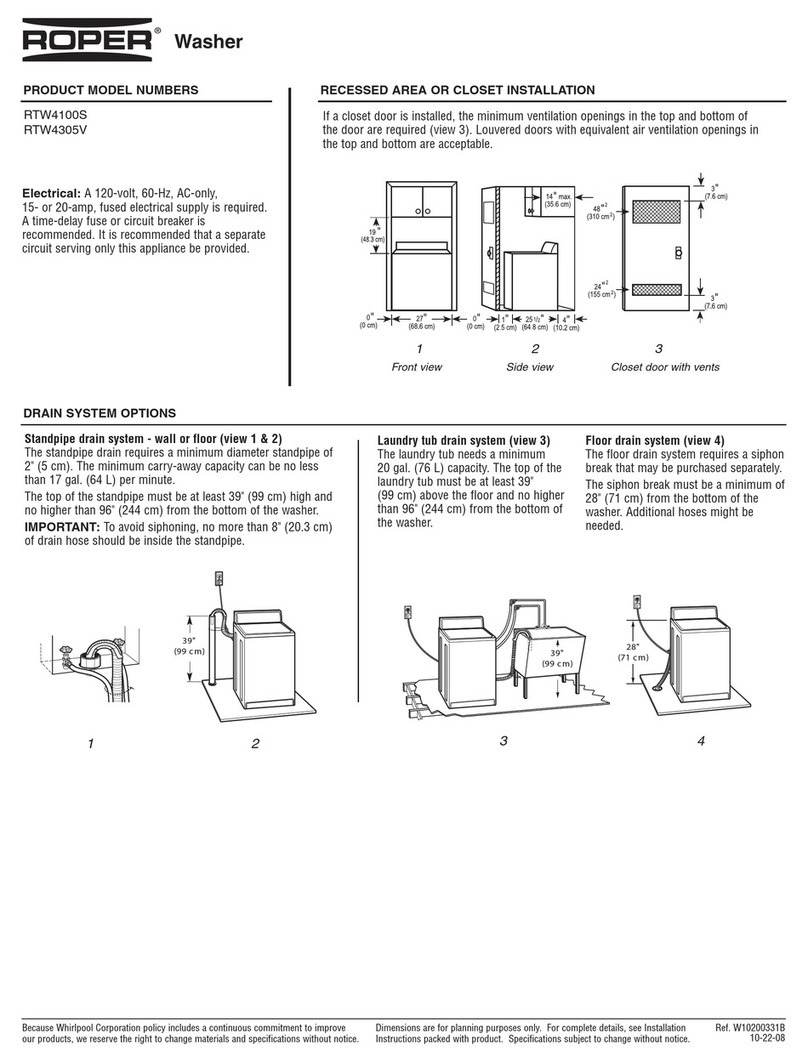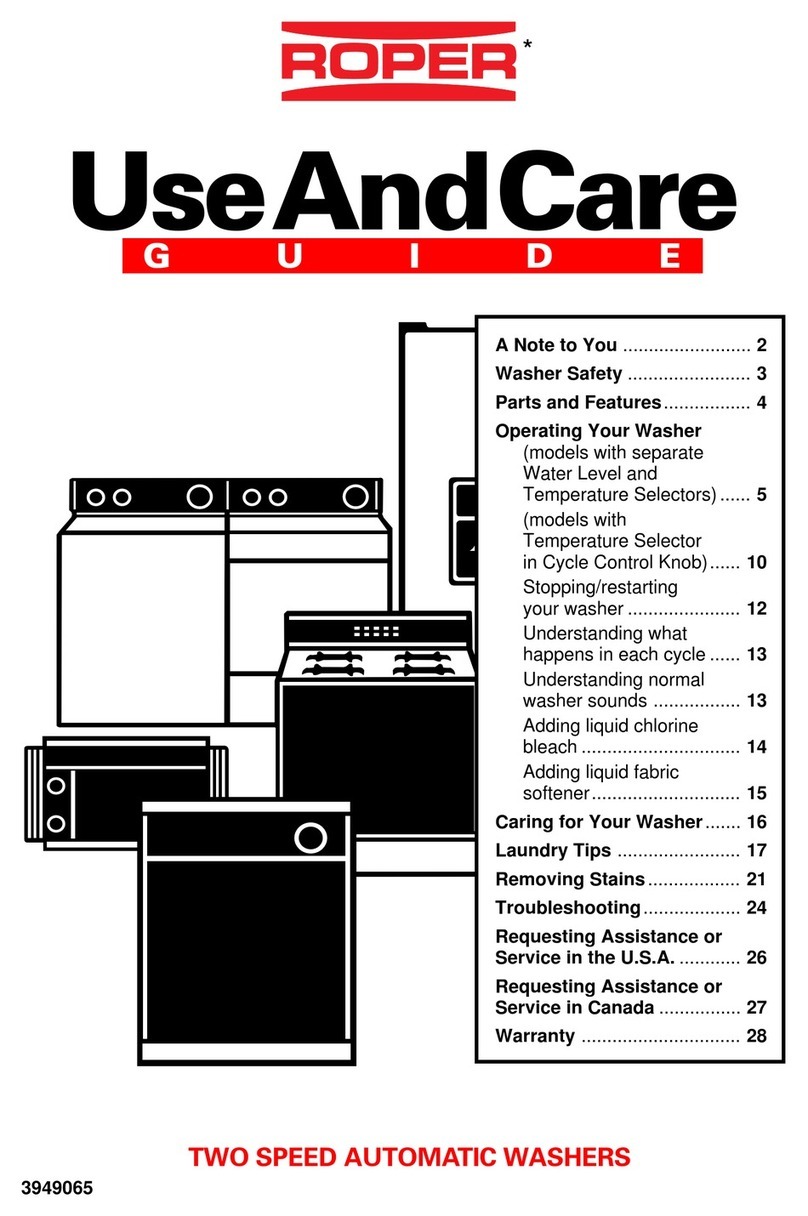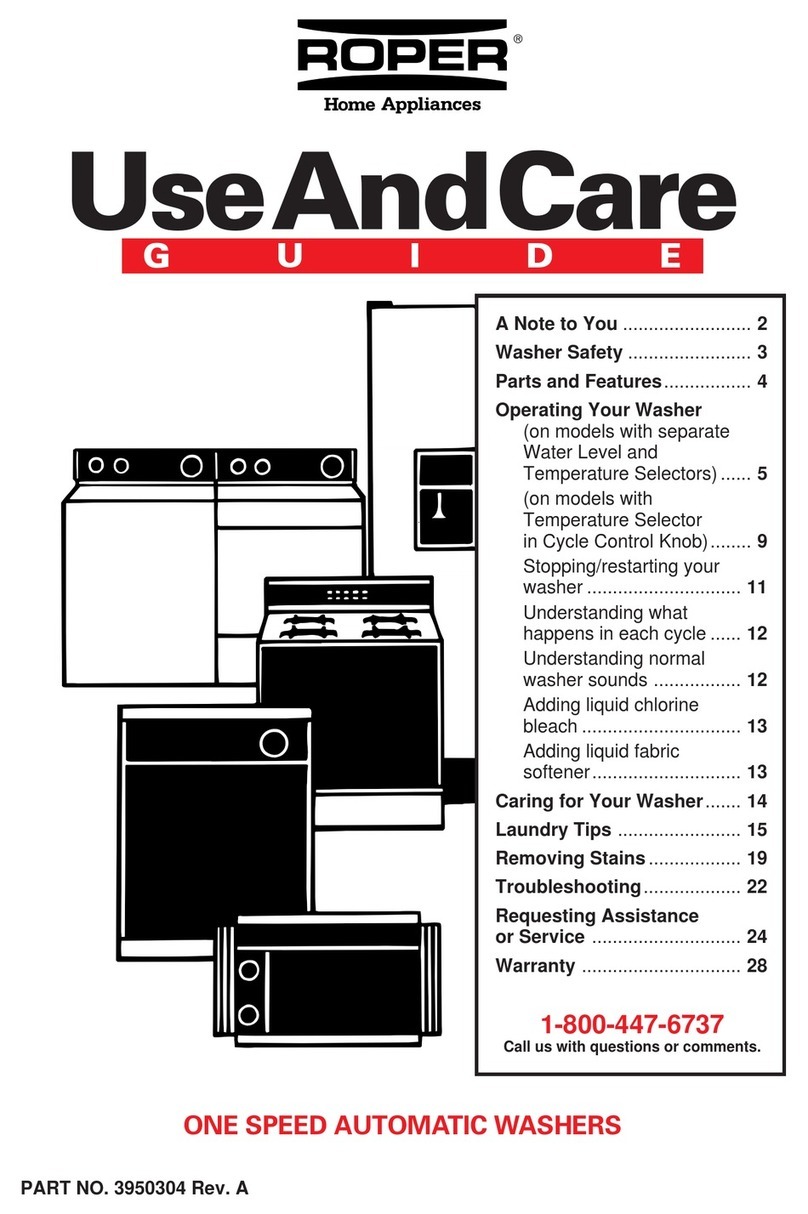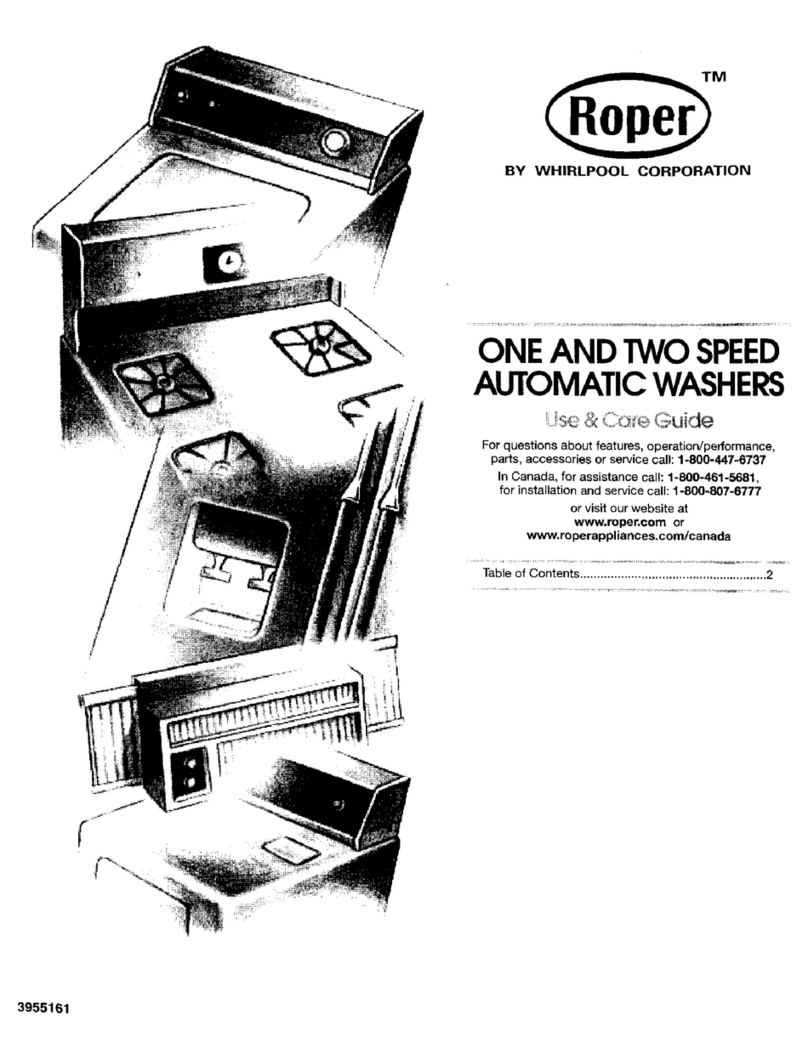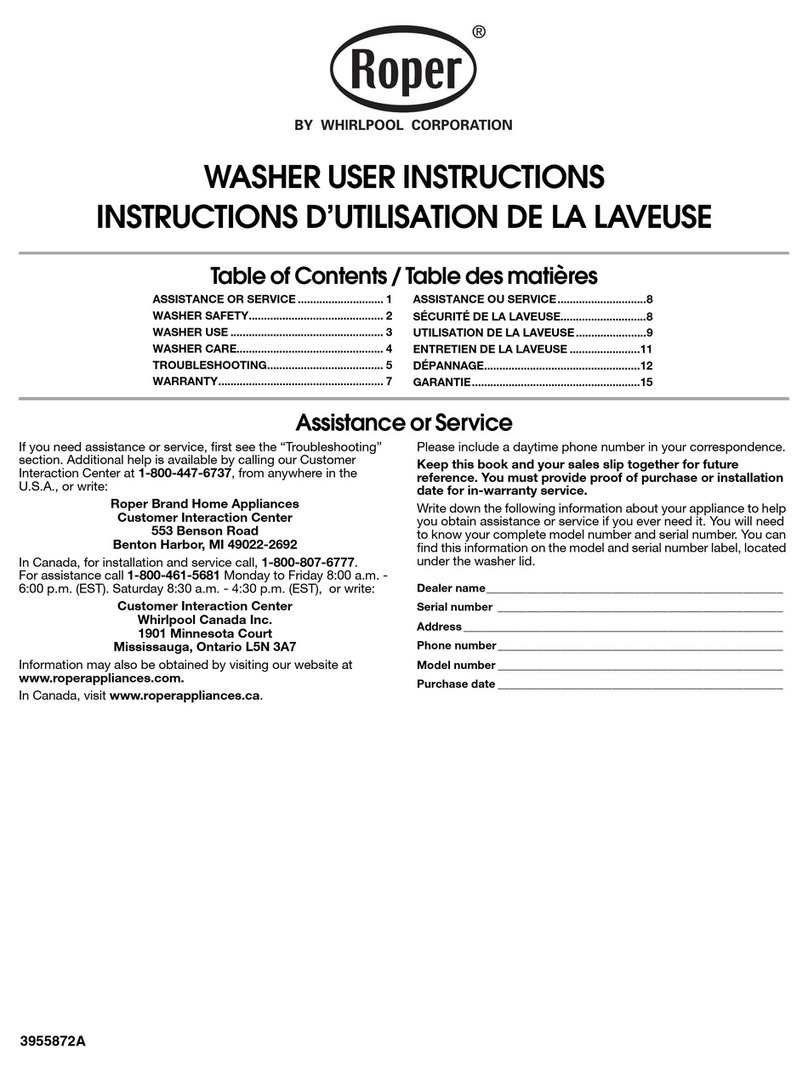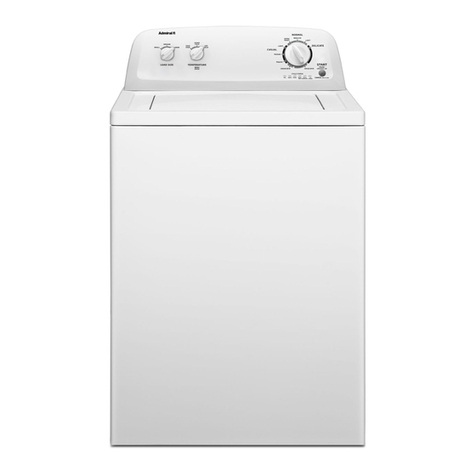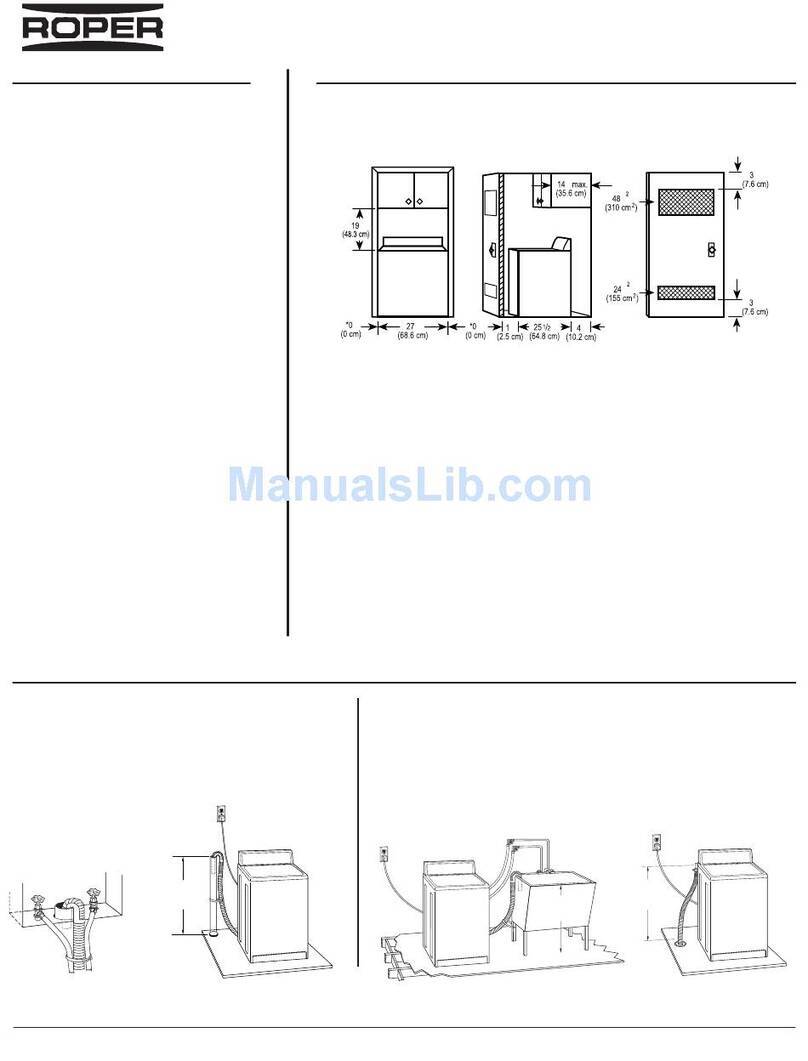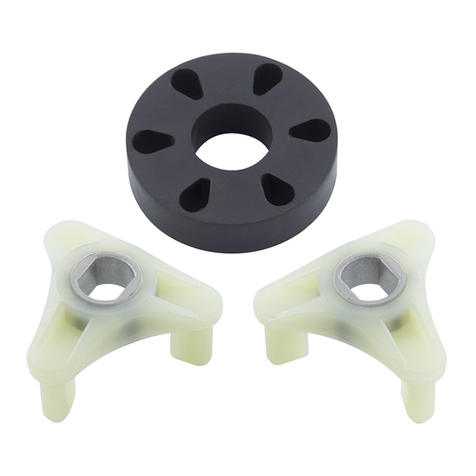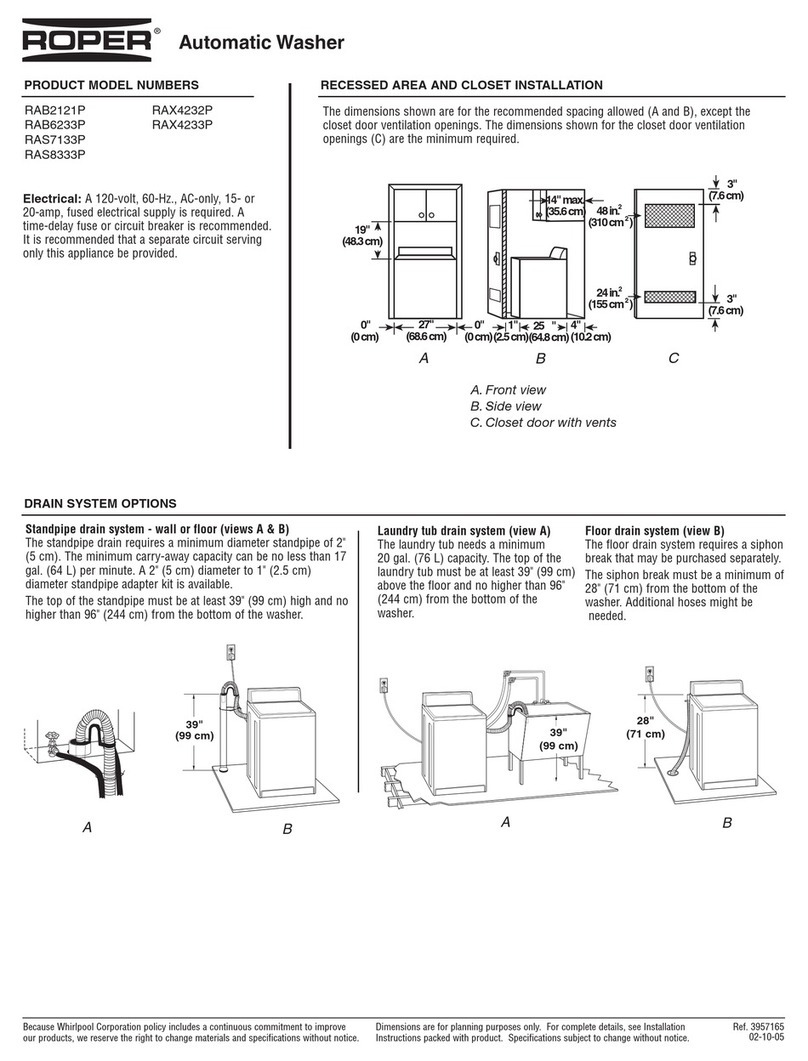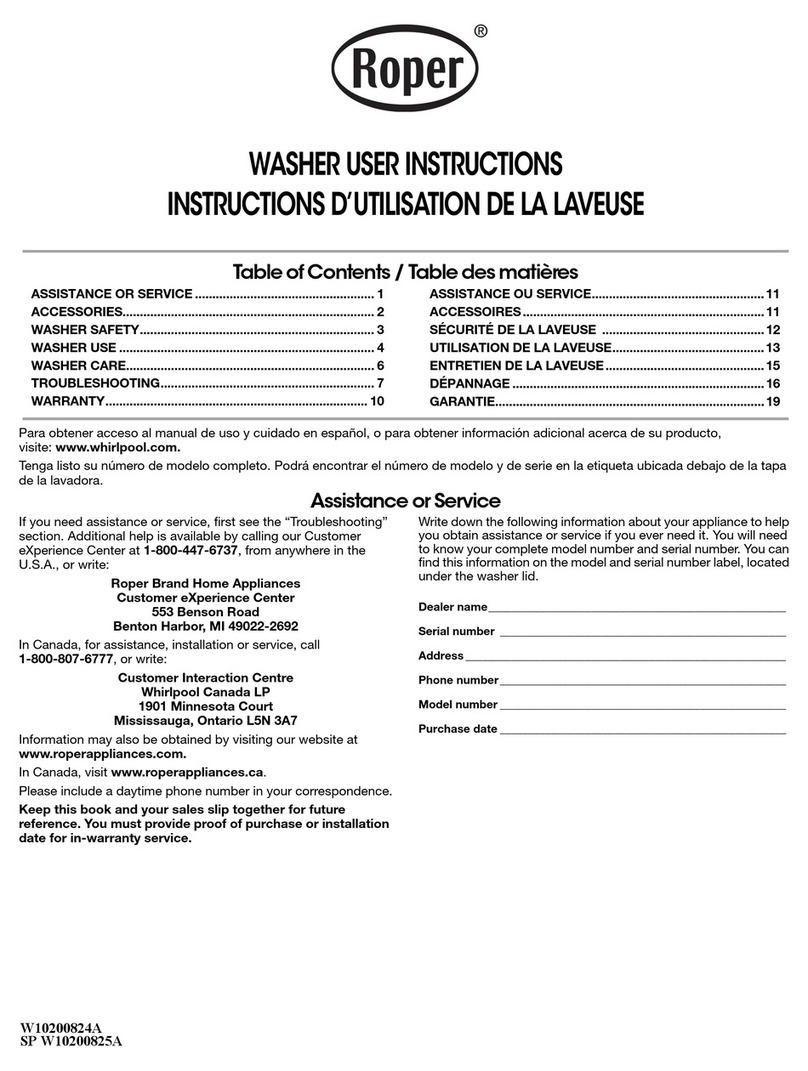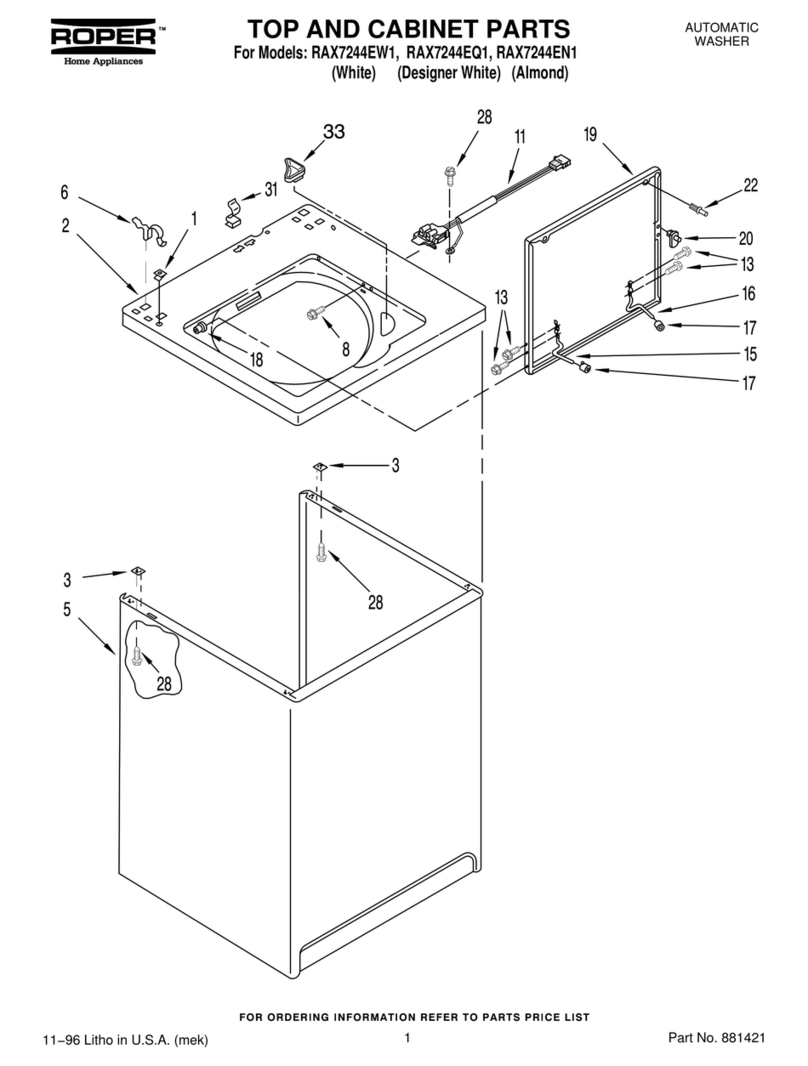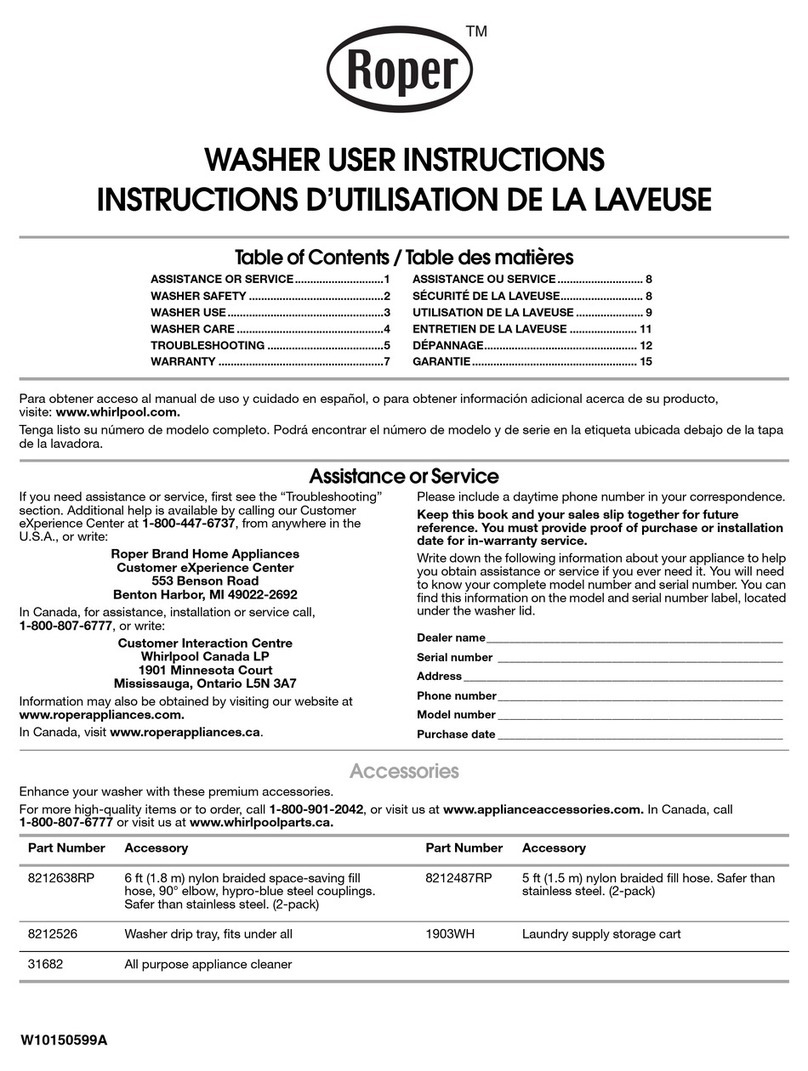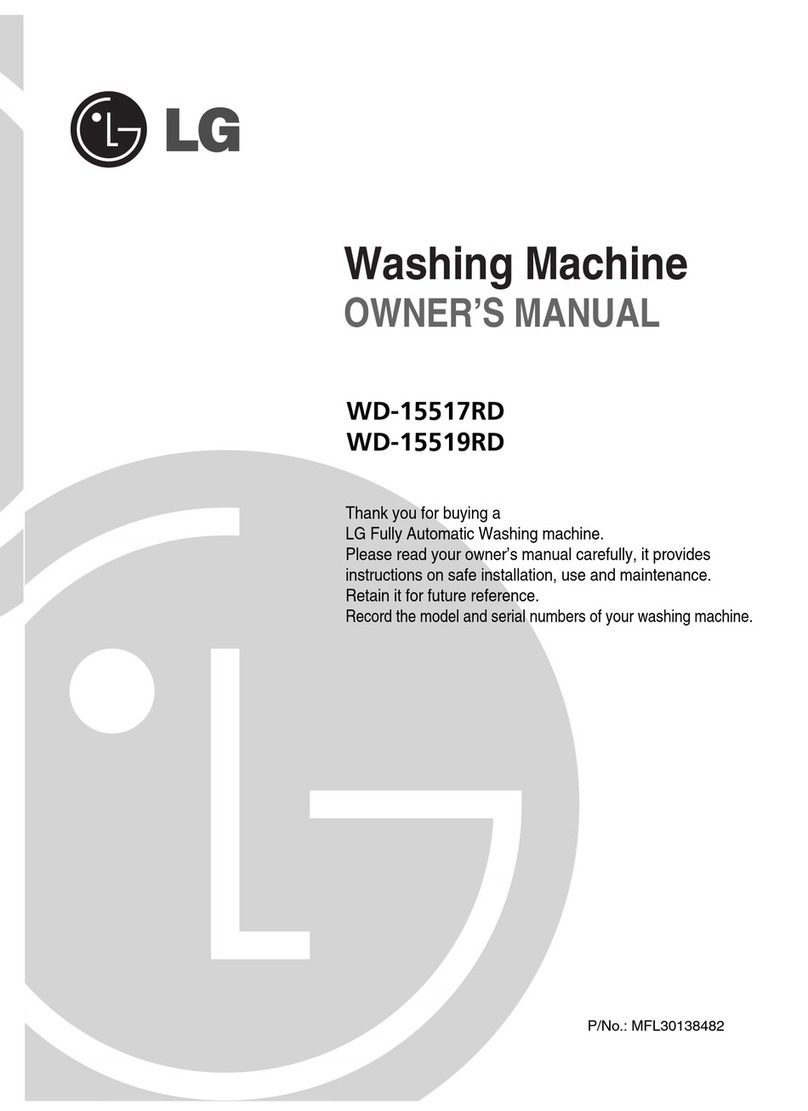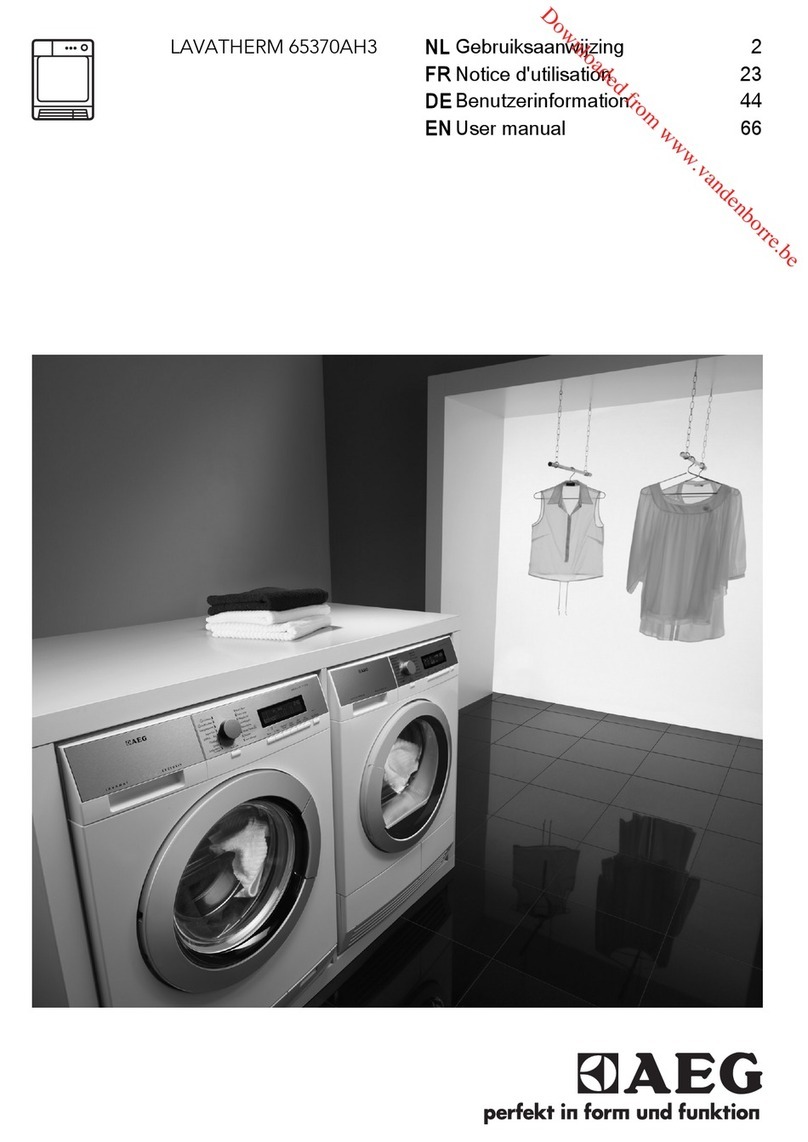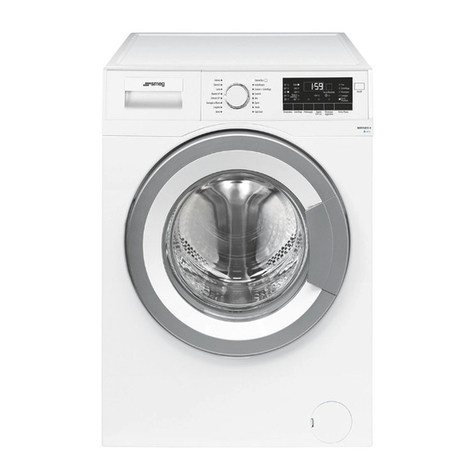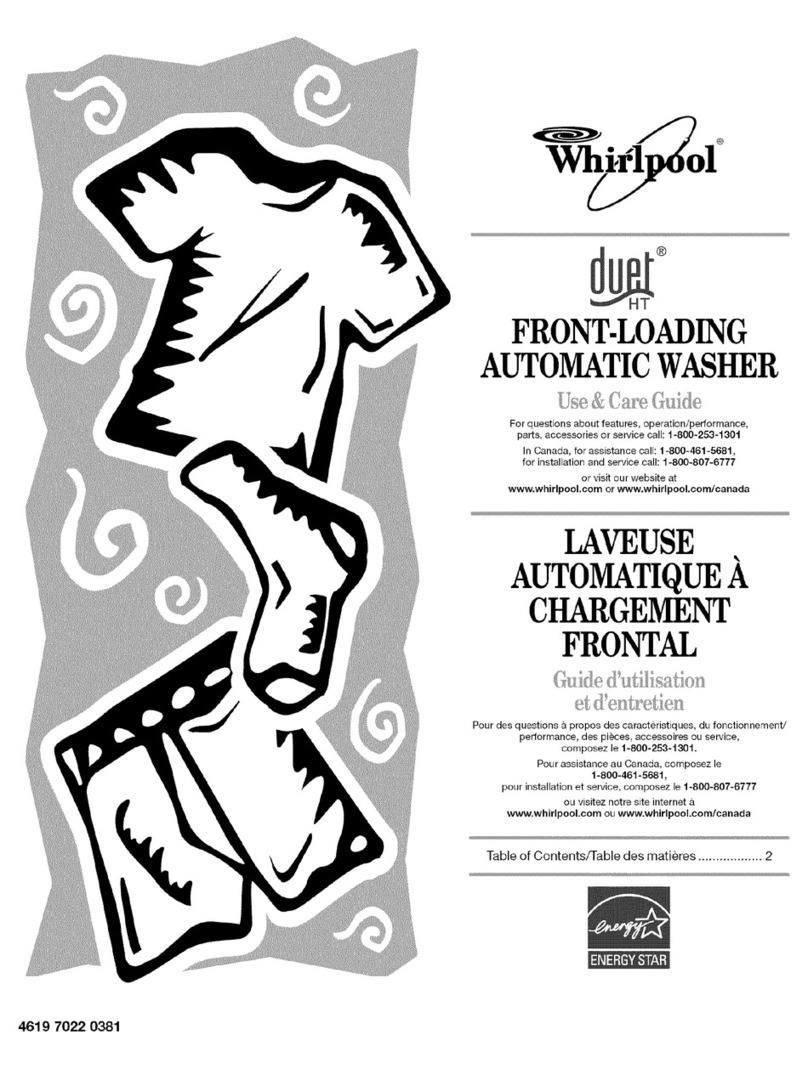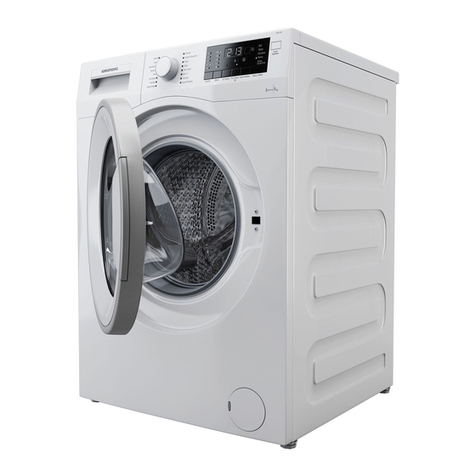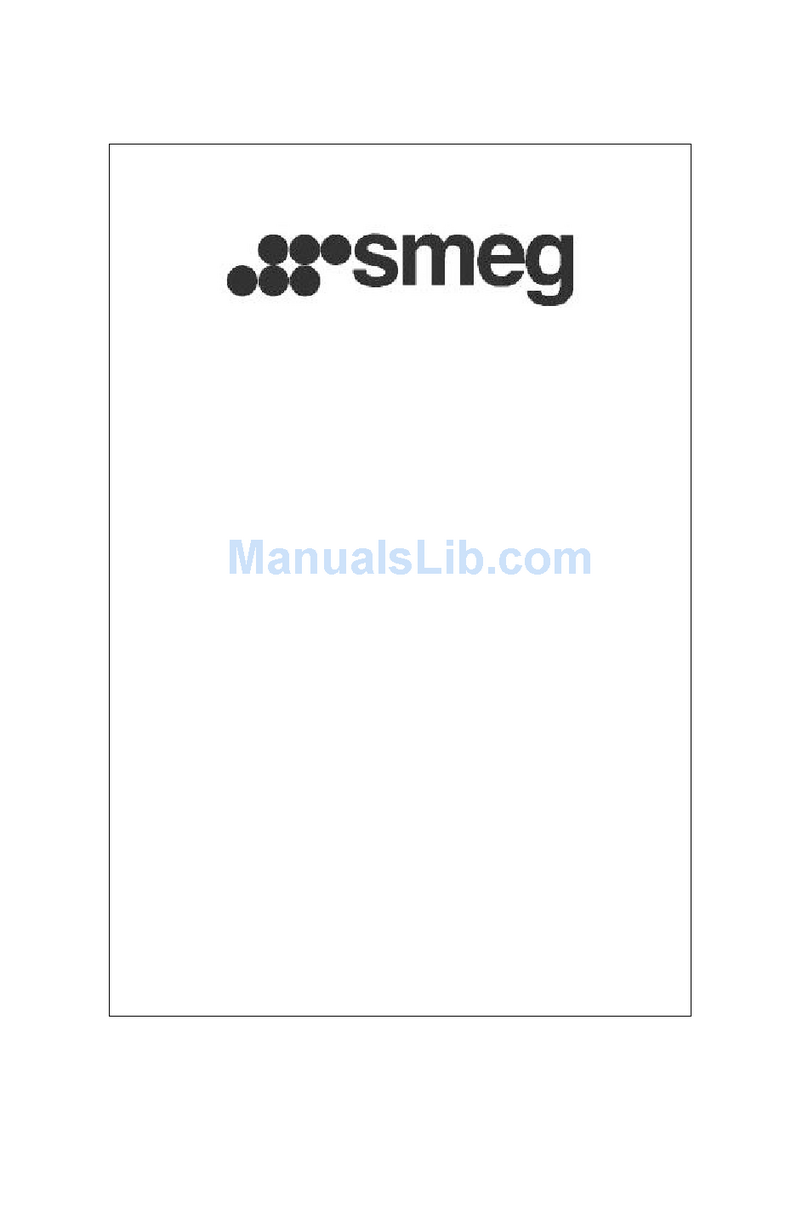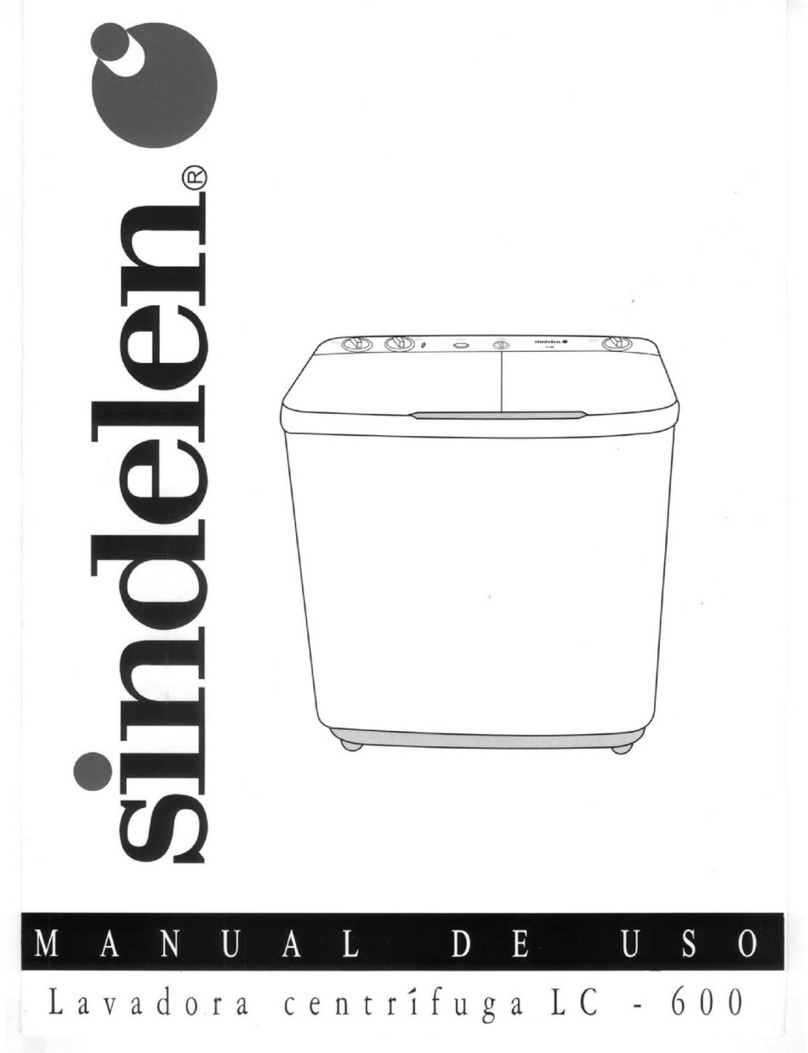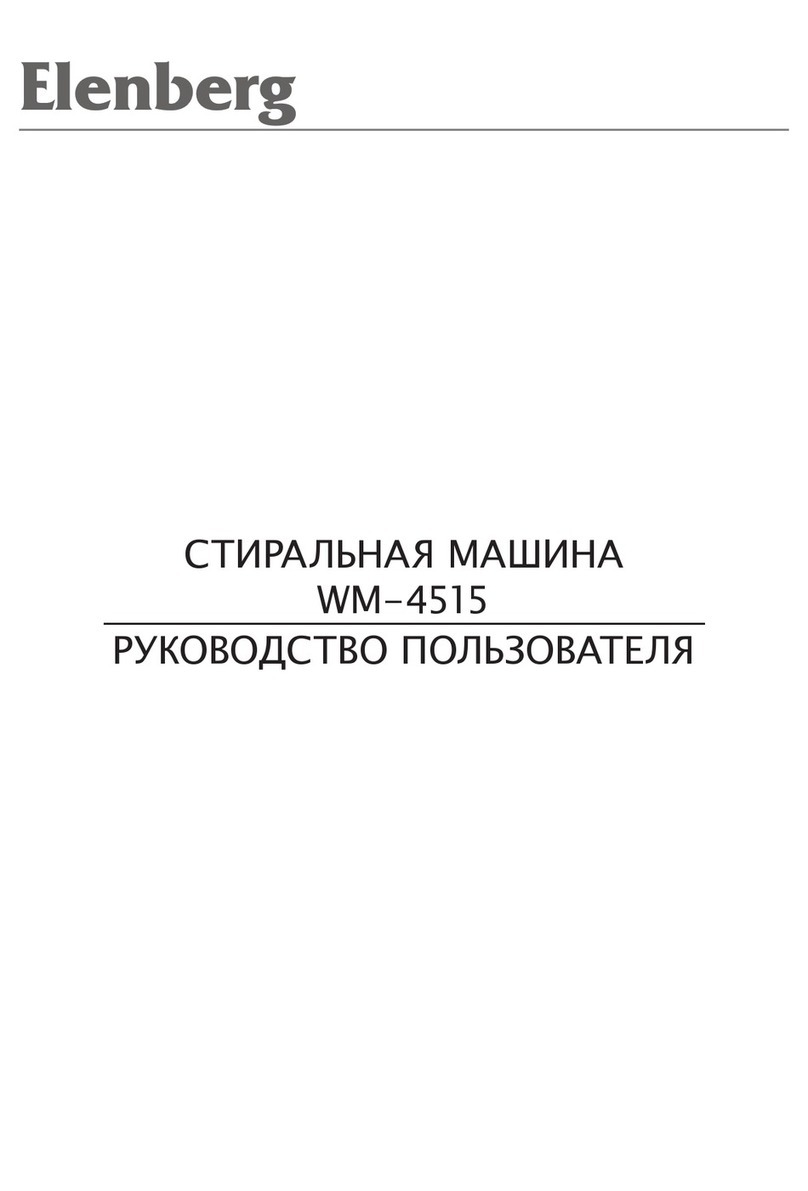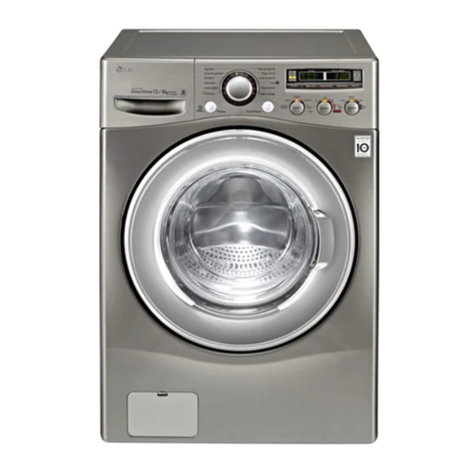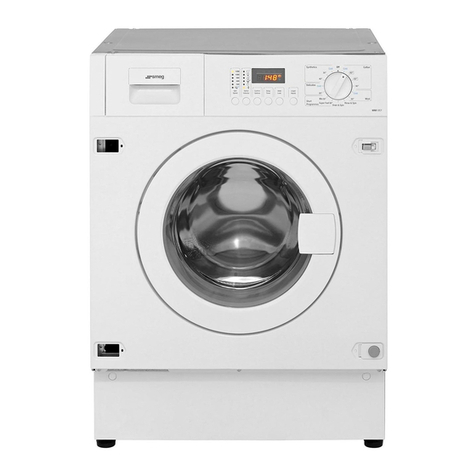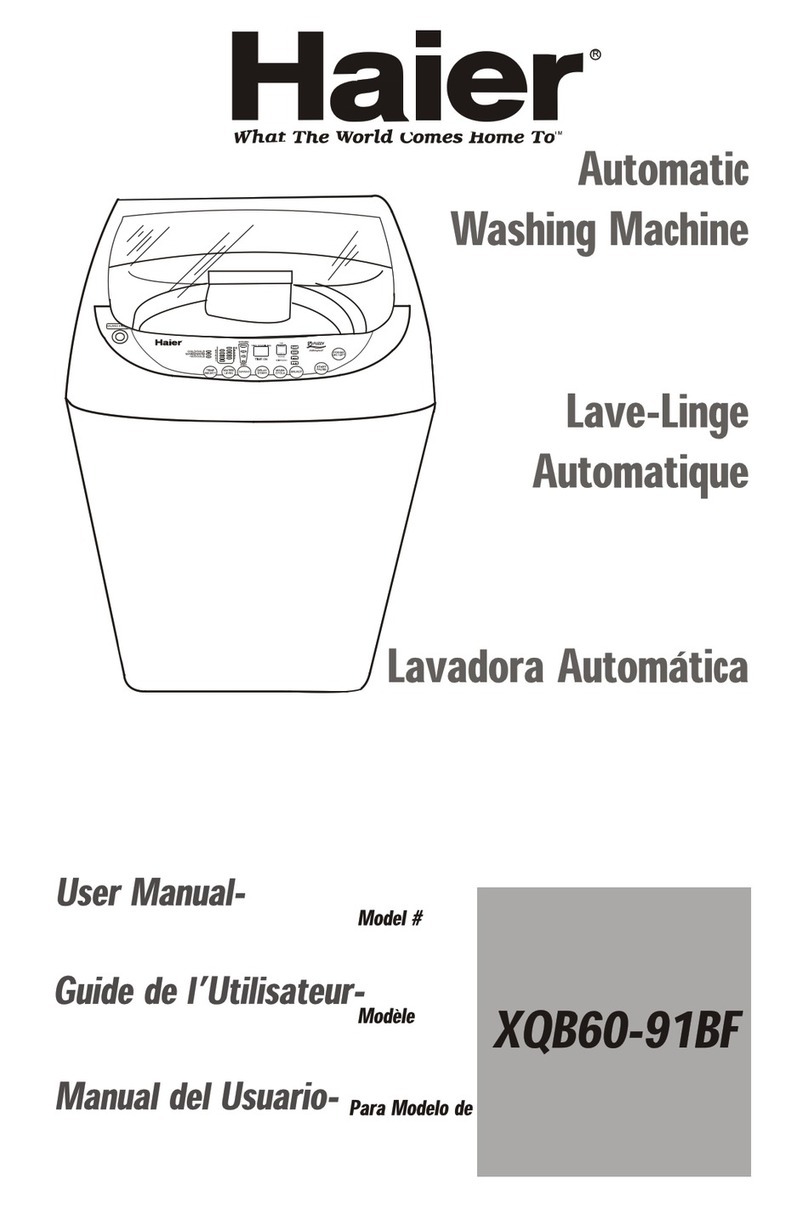Important Safety Instructions
Reduce risk of fire, electrical shock, or personal injury when using your washer, by follow-
ing basic precautions, including the following:
. Read all instructions before using
your washer.
.
DO NOT
wash items cleaned in,
washed in, soakedin or spotted
with gasoline, dry-cleaning
solvents, paint, wax or other
flammable or explosive substances
in the washer. The fumes can create
afire or explosion. Always hand-
wash and air-dry fabrics containing
these materials.
.
DO NOT
allow children to play on or
inside the washer. Close
supervision of children is necessary
when the washer is used near
them.
. Beforethe washer is removed from
service or discarded, removethe lid
to prevent accidental entrapment.
.
DO NOT
reach into the washer
basket while it is filling with water,
while agitator is moving or while
basket is spinning. If the lid is
opened while the basket is spin-
ning, the basket will automatically
stop in afew seconds.
.
DO NOT
install or store washer
n
The washer must be electrically
where it will be exposed to the grounded. SeeInstallation
weather. Instructions.
.
DO NOT
tamper with controls.
n
Storedetergent and laundry
. You are responsible for making sure products in a cool,dry place out of
that your washer is installed, children’s reach.A locked cabinet
repaired and has parts replaced by is recommended.
a qualified person.
n
Readand follow instructions on
.
DO NOT
add gasoline, dry-cleaning detergent and laundry packages.
solvents or other flammable or Payspecial attention to warnings
explosive substances to the wash and precautions.
water. The substances give off
n DO NOT
use chlorine bleach in the
vapors that could ignite or explode. samewash asammonia, vinegar,
n If hot water has not been used
rust remover or other acids.
recently (usually 2 weeks or
Hazardousfumes can form.
longer), hydrogen gas may build n DO NOT
machine-wash glass fiber
up in the water heater and the hot
materials. Smallparticles can stick
water pipes. HYDROGEN GAS IS
to fabrics washed in following
EXPLOSIVE. To prevent injury or
loads and causeskin irritation.
damage, before using your washer, n DO NOT
use or store dry-cleaning
turn on all hot water faucets and
solvents, kerosene or other
allow water to run for several
flammable or explosive
minutes. This will allow gases to
substances in or near your
escape. DO NOT smoke or use any
washer. These substances give off
open flame near the faucet while it
vapors that can create a fire
is open.
hazard or explosion.
.SAVE THESE INSTRUCTIONS.
Energy Saving Tips
1.Usewasher during non-peak
energy usage hours. (Contact your
power company for the most
energy-efficient times.)
2.Usehot water only when washing
whites or heavy or greasy soils.
3.Usecold water for washing light
soils.
4.Usecold rinses.
5.Adjust the water level when
washing small loads.
6.Avoid rewashing by:
- pretreating stains or heavy soils;
- properly sorting clothes;
- using enough detergent;
- not overloading;
- using proper cycles and wash
times.
Before You Wash
1.Turn all pockets inside out and
empty.
2. Turn down cuffs. Brush away lint
and dirt.
3. Closezippers, snaps and hooks and
remove pins, buckles and other
hard objectsto prevent scratching
laundry basket, agitator or
snagging other items.
4.Removeunwashable trim and
ornaments.
5.Tie strings and sashesto prevent
tangling.
6.Mend tears, loosehems and seams.
7.Treat spots and stains. Pre-soakif
necessary.
Page2













